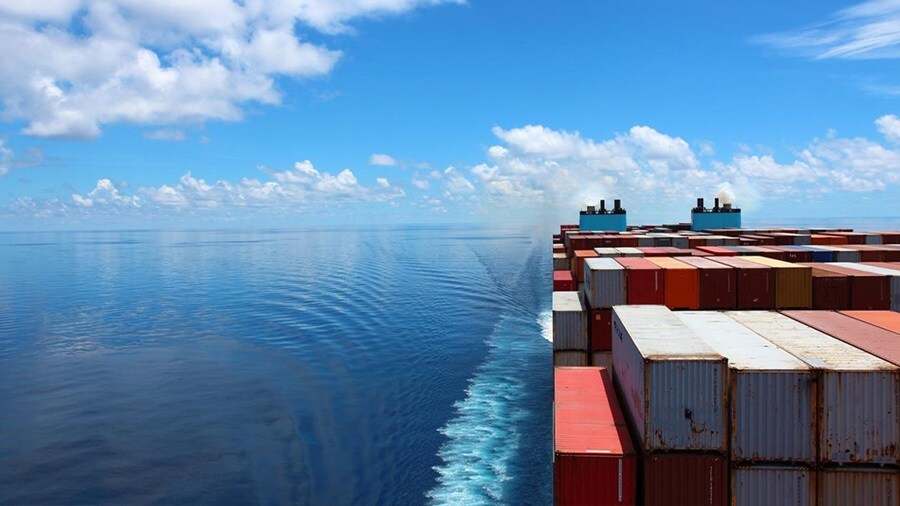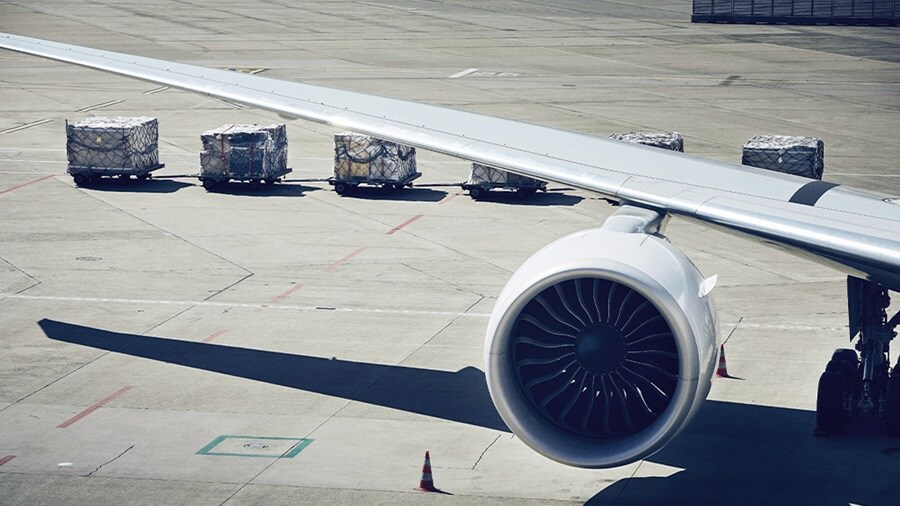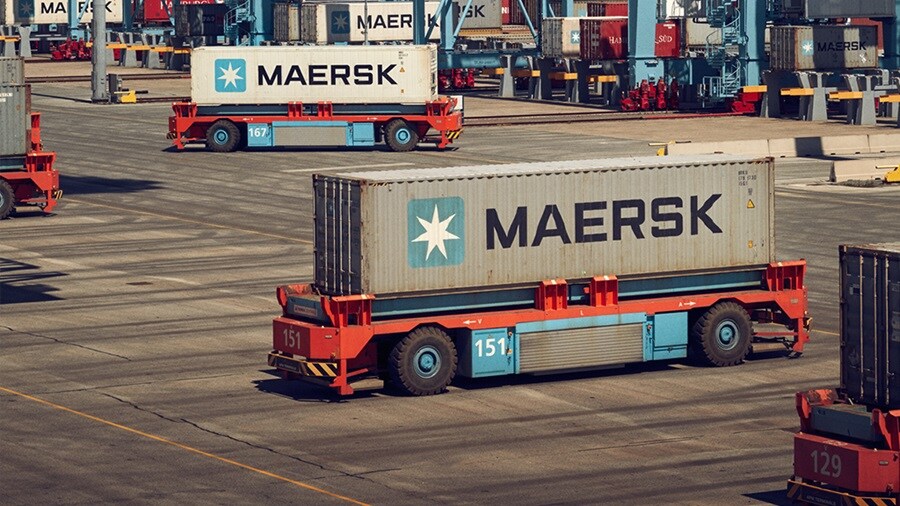After an upbeat end to 2021, economic uncertainty is again dampening global sentiment with the concerns about China’s outlook as it continues to pursue a zero-COVID-19 policy. Despite these issues, we expect a growth in container demand of 2-4%. That comes as airfreight remains strong after some of Asia’s leading airports reported record volumes last year.
This month, we share the latest trend before highlighting current challenges, and we also explain Maersk’s latest solutions to help you keep cargo moving.
Market Trend
Uncertainty about the economic outlook in key markets coupled with geopolitical tensions in Europe and the ever-present risk of further disruptive COVID-19 outbreaks is again set to weigh on sentiment. A surge in US Treasury bond buying together with tighter liquidity and interest rate hikes as inflation hit 7.5 percent in early February, a 40-year high. In China, a sharp drop in Caixin’s manufacturing PMI to 49.1 in January indicated the country’s manufacturing output has lost momentum. The official purchasing manager’s index figure of 50.1 still showed expansion although this was down from 50.3 in December. While analysts believe a combination of COVID-19 restrictions ahead of the Lunar New Year holiday and the impact of the Beijing Winter Olympics drove the PMI figures lower, it also reflects underlying weaknesses in China's economic structure. The property market is fragile, domestic household spending is weak and outbreaks of COVID-19 threaten disruption to manufacturing supply chains.
Ocean is expected to grow in line with the global container demand of 2-4% in 2022, subject to high uncertainties related to the current congestion, network disruptions and demand patterns The International Monetary Fund said global growth is expected to moderate to 4.4% this year, from 5.9% in 2021. Dutch bank ABN Amro has also revised down its growth forecasts in the main industrial markets and now forecasts GDP growth of 3.8% in the US in 2022 down from an earlier forecast of 4.1%, while the Eurozone is set to grow by 3.7% this year compared with 3.9% forecast earlier. Risks to container demand include a levelling-off of consumer goods spending although stronger than expected inventory restocking could push container demand higher in 2022.
Schedule reliability could take until the end of this year to normalise using the experience of the 2015 US West Coast labour dispute, according to Sea-Intelligence in a recent Sunday Spotlight report. “The system is so far out of balance that there is no historical precedent fully describing this situation,” the report said. But using the major delays and bottlenecks caused by 2015 labour dispute as a baseline, Sea-Intelligence said if the current port and hinterland system manages the same speed of recovery this time, the delays could take 8-9 months to resolve.
Trending Topic
Pacific trade update: Maersk will introduce more gap loaders in the next few weeks to mitigate the significant deterioration in vessel waiting times at Pacific North-West. Vancouver has seen wait times increase to 28 days, from 15 days, with a 100% yard density. At Prince Rupert, the waiting time is 15 days while the yard density has reached 112% and the port is unable to store any more containers. Consequently, Prince Rupert will only allow ships to berth if they discharge the same number or fewer boxes than they load which could lead to further vessel delays.
Due to this disruption, we are planning five missed sailings from mid-February to the end of March on transpacific services TP1 and TP9. Currently, TP9 is schedule to have at least two missed sailings in March. To mitigate the impact, we plan to have eight gap loader calls in February and March although the actual number will depend upon operating conditions at the terminals. We will also launch a new TP28 service calling at Vung Tau - Yantian - Ningbo - Shanghai - Houston - Norfolk to offer customers the option of re-routing inland cargoes through Norfolk and Houston. The service will have a weekly capacity of 4,500 teu.
Asia outlook: Overall demand out of Asia fell after the Lunar New Year due to holidays and factory closures although it is expected to recover quickly and remain strong in the first half. Space will remain tight particularly on the transpacific and Europe trades. The equipment situation is improving due to the proactive action we took last year and is expected to remain healthy across Asia up to April. We will continue to encourage customers to switch to 20ft containers and non-operating reefers (NOR). Ports in Asia are operating well with reduced congestion and waiting times although the situation in Europe and US remains challenging. In Europe, the average delay ranges between 7-14 days while in US the situation varies dramatically port to port with the worst facing delays of up to 40 days. The port disruption will continue impacting schedules in the coming months.
Ocean Update
We are focused on preparing for the possible impact from Omicron in South East Asia, and we are investing in the right resources to ensure the continued running of a smooth hub operation, which is essential for our customers. In general, we see waiting times at ports in Asia Pacific are improving, but in both US and Europe we still have delays and disruption. We are getting better at predicting the delays from these disruptions, meaning that we can give our customers better information earlier for them to enhance their ability to plan better for their business. Providing our customers with this ability, is and will be a big focus for us in the time to come.

- Schedule reliability: Maersk was the top performing carrier with a schedule reliability of 46.4% last year, according to the 2021 Global Liner Performance Report published by Sea-Intelligence. Average schedule reliability among the top 14 individual carriers was 35.8% in 2021, down from 63.9% in 2020. Among the alliance groups, Maersk’s 2M was the most reliable carrier group with a schedule reliability of 33.6% in alliance sailings. Consequently, reliability remains far from satisfactory for our customers and we will continue to prioritize action to improve the situation in 2022.
- Oceania exports: Reefer demand from New Zealand is ramping up with high demand expected throughout the March and April peak. Australian exports have been negatively impacted from Omicron and labour shortages.
Australian meat exports are forecast to grow 11% year-on-year. Australian feeder space is in high demand following rail track closure between Australia’s east and west coasts.
- Key Market Outlook across trades lanes
| Trade Lane | Market Outlook |
|---|---|
|
Trade Lane
APA - NEU
|
Market Outlook
With a brief drop in volumes due to Lunar New Year we took the opportunity to restore our schedules where possible. Details of the vessels and voyage numbers can be found in our Customer Advisories on our website. We now see volumes picking up, confirming that underlying demand is still very strong on the Asia-North Europe trade.
|
|
Trade Lane
APA - MED
|
Market Outlook
Overall demand is gradually recovering after the Lunar New Year although there are differences in Mediterranean markets. Demand and consumption in the western Mediterranean are weak, while in the central and eastern Mediterranean demand is stable and vessels full. Port delays continue and we do tandem port omissions to minimise delays. There are three confirmed vessel slidings in the Mediterranean trade to recover sailing schedules.
|
|
Trade Lane
APA - NAM
|
Market Outlook
A quick recovery in demand is expected after Lunar New Year but the North American ports situation is deteriorating and capacity will continue to be lost due to missed sailings causted by post congestion. Delays on the US East Coast are around a week and for the west coast up to 40 days. We are seeing more overflow in the network due to strong demand and missed sailings. With no improvement likely for months, customers should give more lead time between ETA and actual departure time.
|
|
Trade Lane
APA - LAM
|
Market Outlook
Demand is forecast to fully recover after the Lunar New Year break in weeks 8 or 9. For East Coast South America services reliability is up to 90%. From Atacama 208W will not longer call at Itajai and customers are advised to transfer cargo at Itapoa. For West Coast South America service reliability is 65% partly due to a COVID-19 outbreak on Clifford Maersk. A panamax vessel will be deployed as a replacement.
|
|
Trade Lane
APA - WCA
|
Market Outlook
Demand is projected to recover by early March. Ramadan will take place in early April and the peak is expected in the first half of March for shipments to Middle East/Red Sea/Pakistan. A 40% tax by India on solar panels from March 31 may have some impact on shipment volumes. Maersk's ABX service offers a direct connection between Shanghai/Shekou to the Middle East via Jebel Ali. The F14 service to southeast India resumed a weekly schedule from February.
|
|
Trade Lane
APA - AFR
|
Market Outlook
Demand from China is expected to rebound in March. For West Africa, capacity is protected to maintain service levels. Despite a fixed berth window into Onne contracted accounts are slow to deliver cargo. For East Africa, there will be some vessel sliding due to congestion at destinations.
|
|
Trade Lane
APA - OCE
|
Market Outlook
Customers can expect improved schedule reliability on the Dragon service following the introduction of an extra vessel in the rotation. Customers are advised to give more lead time for cargoes to Auckland because yard congestion and long port delays are impacting cargo flows.
|
|
Trade Lane
Oceania Export
|
Market Outlook
Maersk has improved schedule reliability on the Oceania-Asia trade to 35% compared with the industry average of 18%. Congestion at Auckland is worsening and vessels now have to wait around 21 days. Further port omissions are likely to maintain service reliability.
|
|
Trade Lane
Asia Import
|
Market Outlook
We are working hard to resolve reefer equipment shortages in Europe and we expect the situation to improve at the end of February. Cargo delays are likely due to vessels leaving late from congested ports in Europe and North America.
|

Air Update
- Asia: International air cargo volumes at Asian airports rebounded last year compared with 2020 partly due to shippers switching modes as a result of extensive disruption to ocean freight. At Hong Kong, which has traditionally been the world’s busiest international air cargo airport, volumes recovered to 5 million tons in 2021, close to the record 5.1 million tons in 2018. Seoul’s Incheon Airport recorded a record high of more than 3 million tons in 2021, while Taipei and Narita also achieved new cargo records of more than 2.5 million tons for the first time.
- Greater China: Overall market demand has slowed following the Chinese New Year and will likely normalise at the end of February. Many airlines will gradually resume full schedules. With lower volumes, airport congestion has eased and productivity improved. Maersk has introduced a direct Shanghai-Toronto weekly charter service, which also offers connecting flights to Latin American destinations. Maersk Airfreight continues to offer fixed charter and commercial solutions to help customers minimise the impact from changing market environment.
- Australia and New Zealand: A backlog of airfreight in China, Hong Kong and Vietnam due to the Lunar New Year holiday will directly impact capacity into both Australia and New Zealand until early March. Capacity continues to remain tight from all major airports, keeping freight costs at premium levels. Export markets from Australia remain at spot levels until further notice. But the lifting of visitor restrictions could see airlines introduce more flights and larger capacity aircraft that would help the capacity situation.
- Vietnam, Cambodia and Myanmar: Demand has dropped until the end of February and rates have also fallen. Market sources said demand is expected to rebound from March.

Inland Services Update
- Greater China: Landside capacity is expected to fully recover by the end of February across all transport modes. For intercontinenal rail, there is spare capacity between China and Europe although space to Russia and Central Asia is still tight. Transit times have improved compared with January and China-Europe is back to 16-20 days.
- Australia and New Zealand: There are still capacity constraints in warehouses and distribution centres with customers searching for overflow pallet storage across all areas of Oceania. The disruption to the rail network serving western Australia is adding pressure on stock holdings on the east coast.
- Indonesia and Philippines: There is strong demand on inland exports from Jakarta, Semarang and Surabaya as factories gear up for the peak season in the second quarter while inland imports are constrained by space constraints in inbound feeders to Indonesia’s main ports. Customers should be aware of the pre-Ramadan rush during March-April and plan truck bookings well ahead. We have facilities at the Jakarta and Surabaya depot for customers who need to re-stuff/re-strip from containers to trucks.
Major Port Update
Major ports update (Vessel waiting time indicator)
| Area | Less than 1 day | 1-3 days | More than 3 days |
|---|---|---|---|
|
Area
Asia-Pacific
|
Less than 1 day
Busan, Shanghai, Ningbo, Shekou, Xiamen, Qingdao, Yantian, Nansha, Hong Kong, Lyttelton, Tauranga, Tanjung Pelepas
|
1-3 days
Port Klang, Singapore
|
More than 3 days
Auckland, Sydney
|
|
Area
Rest of World
|
Less than 1 day
Balboa, Lazaro Cardenas, Buenaventura, Tin Can
|
1-3 days
Antwerp, Bremerhaven, Rotterdam, Durban, Newark, Savannah, Baltimore, Tema
|
More than 3 days
Felixstowe, Long Beach, Los Angeles, Oakland, Vancouver, Seattle, Prince Rupert, Charleston, Houston, Miami, Apapa, Cotonou, Cape Town, Dar Es Salaam
|
- Asia: Tanjung Pelepas has seen congestion gradually improve with open acceptance for cargo imports where space/equipment is available. Beibu Gulf feeder services are still tight and we suggest customers use trucking as an alternative for imports.
- South Asia: Colombo is facing operational delays due to high yard density and bad weather disruption.
- Africa: Congestion in Cape Town will cause port omissions or vessel sliding for schedule recovery. Dar Es Salaam: Waiting time is 16 days on average.
- Oceania: Auckland is facing a waiting time of 21 days due to congestion.
- North Europe: Congestion remains across North European ports although exact delays vary per location. Felixstowe and Rotterdam currently show waiting times of >7 days.
- Mediterranean: Israel short term offer remains closed due to operating restrictions. Algeria is facing the eeder congestion until April and we have to hold the short term drive.
- US: Savannah/Newark/Baltimore/Miami/New Orleans have a wait time of 1-2 days. For Charleston and Houston the wait time is 8 days, Oakland 11 days, Seattle 7 days, Los Angeles 30 days and Long Beach 40 days.
For more information, please contact:
无论您需要什么,我们都可以随时为您提供帮助
I agree to receive logistics related news and marketing updates by email, phone, messaging services (e.g. WhatsApp) and other digital platforms, including but not limited to social media (e.g., LinkedIn) from A. P. Moller-Maersk and its affiliated companies (see latest company overview). I understand that I can opt out of such Maersk communications at any time by clicking the unsubscribe link. To see how we use your personal data, please read our Privacy Notification.
By completing this form, you confirm that you agree to the use of your personal data by Maersk as described in our Privacy Notification.


